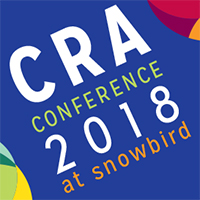Meeting the Needs of Individuals with Disabilities- Accessible Computing

By Andrew Sears, CRA Board Member, The Pennsylvania State University
My research focuses on empowering individuals through computing technologies that more effectively match their knowledge, experience, abilities, and goals. The majority of my recent research has focused on accessibility-related issues. Working with my students, our research employs a broad definition of accessibility, seeking to empower individuals with disabilities as well as individuals who may experience challenges due to the environment in which they are using computing technologies.
Our early research focused on the needs of individuals with physical disabilities that hindered their use of a keyboard and mouse. Through a series of studies involving individuals with high-level spinal cord injuries, usage patterns were identified as were opportunities to allow for more efficient and effective interactions. These early studies produced a pair of critical observations that produced more effective speech-based interactions and also provided guidance for much of our subsequent research.
Regarding the first observation: One argument used to motivate research on the needs of individuals with disabilities is that the resulting solutions may also prove useful for individuals experiencing temporary disabilities that impact the same functions. For example, the argument would be that solutions developed for individuals who are blind would also be useful for individuals who find themselves in a situation where they cannot view a screen. While these indirect benefits may occur, our research suggested that such assertions are not always justified. For example, our research demonstrated that individuals with physical disabilities that prevent them from using a keyboard and mouse developed different strategies than individuals who were temporarily prevented from using a keyboard and mouse when facing the same task. As a result, developing solutions that benefited one of these groups would not necessarily benefit the other. These results highlighted the importance of involving the intended users in accessibility-focused research as well as the need to be cautious when conjecturing about the generalizability of results produced through such research.
The second critical observation involved the use of error-prone technologies. We observed that speech-based interactions, which were originally supported, provided powerful but unreliable commands. When successful, these commands would enable users to quickly generate text and correct any errors that may occur. In reality, failure rates were such that cascading errors resulted in inefficient interactions and significant frustration. Two design strategies were identified, and subsequently validated, through additional studies. Productivity and satisfaction can be improved by providing more reliable but less powerful commands and by reducing the consequences when commands fail.
These insights informed the design of speech-based interactions for individuals with physical disabilities that resulted in increased productivity and satisfaction. Importantly, these same insights also proved useful when designing for a variety of other user groups including older adults, individuals with impaired vision, and individuals with no known disabilities using gesture-based interactions.
A recent area of research focused on the goal of identifying subtle changes in an individual’s cognitive status based on their everyday interactions with computing technologies. The goal was to identify subtle changes, which would not necessarily be identified through standard clinical examinations, that could allow earlier diagnosis and treatment. While the original motivation was Alzheimer’s Disease, this same approach could be leveraged to identify changes resulting from concussions, subconcussive impacts, or other injuries or diseases that impact cognitive function.
Of course, none of this research would have been possible without the significant contributions of my students, especially Jinjuan (Heidi) Feng, Min Lin, Liwei Dai, Kathy Price, Lisa Vizer, Shaojian Zhu, and Rich Goldman.
About the Author
Andrew Sears is a professor and dean of the College of Information Sciences and Technology at Penn State. Sears’ research explores issues related to human-centered computing and has included projects that explored issues involving accessibility, mobile computing, speech recognition, and assessing an individual’s cognitive status via normal daily interactions with information technologies. He currently serves on the editorial boards of ACM’s Transactions on Computer-Human Interaction, ACM’s Transactions on Accessible Computing, and the International Journal of Human-Computer Studies. He was named an ACM Distinguished Scientist in 2010, and currently serves on the board of directors of the Computing Research Association. He earned his Bachelor of Science degree in computer science from Rensselaer Polytechnic Institute and his Ph.D. in computer science with an emphasis on human-computer interaction from the University of Maryland, College Park.



